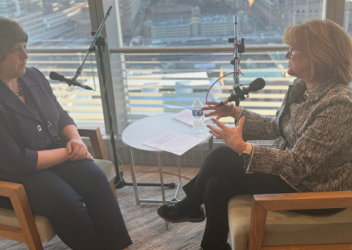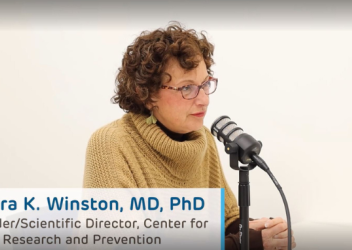TRANSLATING INJURY PREVENTION RESEARCH INTO ACTION
At the Center for Injury Research and Prevention (CIRP) our care for children and families fuels our mission to accelerate the pace of research to keep children safe -- reducing injury and violence and promoting recovery. We are driven to advance interdisciplinary science and translate our discoveries into breakthroughs in technology, clinical care, policy and education.
Our Vision: A future where all young people live to their full potential unencumbered by consequences of physical and emotional injury
Injuries, both physical and psychological, affect everyone, regardless of age, race, or economic status. For young people under age 25, unintentional injury, suicide and homicide are the 3 leading causes of death-- together claiming nearly 33,000 lives in 2020, according to the Centers for Disease Control and Prevention. Fatalities are the tip of the iceberg; the burden of serious injuries that lead to physical and emotional consequences is large.
Our Origins
CIRP, based at Children’s Hospital of Philadelphia since 1997, was the first Center of Emphasis in the CHOP Research Institute. As a unique academic research center, CIRP fosters a multidisciplinary and collaborative environment and follows Research to Action to Impact principles. CIRP scientists conduct foundational and applied Research and translate it into technological, clinical, and policy-driven Actions, which result in measurable Impact on reducing the burden of serious injury and violence for children and families.
Innovations led by CIRP scientists, strategic collaborations with a broad set of stakeholders, and a centralized administrative, outreach and strategy support structure have nurtured high-impact research initiatives helping them mature into robust clinical and translational research programs.
Our Present
Broadly, our areas of focus include young driver safety; violence prevention; road traffic protection; injury and rehabilitation biomechanics and engineering; concussion and brain health; traumatic stress; and transportation equity. We address social determinants of child health, such as safe schools, safe neighborhoods, safe homes, safe play spaces and equitable traffic mobility. CIRP research areas of focus continue to evolve to include unique collaborations between focus areas or with other CHOP programs or external partners.
CIRP is integrally linked, scientifically and administratively with shared resources, to numerous CHOP-based partner programs that are critical to the hospital’s efforts to address the leading causes of death and acquired disability among youth in our own Philadelphia community and across the nation. Several of these programs have received special designation by CHOP and the Research Institute noting their priority to the institution's mission. Other partnerships extend beyond CHOP to other academic partners regionally and nationally.
CIRP is led by Kristy Arbogast, PhD, scientific director, Rachel Myers, PhD, MS, associate director, Ronni Kessler, MEd, business and administrative director, and Suzanne Hill, strategy director (pictured here).

CIRP Leadership Council members are Daniel Corwin, MD, MSCE; Allison Curry, PhD, MPH; Valentina Graci, PhD; Stephen Leff, PhD; Elizabeth Walshe, PhD, and Flaura Koplin Winston, MD, PhD, founder and former director. Additionally, Catherine McDonald, PhD serves on the Council as liaison from the Penn Injury Science Center, where she is co-director and training core director.
Meet Our Entire Multidisciplinary Team
Together, our work defines the state-of-the-science clinical and behavioral healthcare needed by those who suffer physical and emotional injury and violence.Integration of rigorous engineering, behavioral and data science, and epidemiology ensures an emphasis on leading edge technology and innovative approaches that provide multi-pronged solutions to pediatric physical and emotional injury and violence.
CIRP's CHOP-Based Partner Programs
Center for Child Injury Prevention Studies
Center for Pediatric Traumatic Stress
Center for Violence Prevention
Innovation Ecosystem
Minds Matter Concussion Program
Neuromotor Performance Lab
Neuroscience of Driving Program
NJ-SHO Center for Integrated Data
CIRP scientists and staff champion:
Scientific rigor and bold advances in injury research methods and analytics
Community-engaged research with practitioners, patients, families, and other key stakeholders
Communication and partnerships with stakeholders, such as industry and government, who are best positioned to have our research achieve impact
Respect and curiosity for people with various life experiences, skills and approaches to injury prevention and recovery
Training the next generation of injury prevention scientists and practitioners
So that young people and their families live where there is:
Access to safe mobility and safe communities for all
Access to excellent post-injury clinical care and recovery for all
CIRP's 2024-2029 Strategic Plan outlines our vision and goals to conduct high impact research to mitigate the burden of injury and violence, retain and recruit excellent injury scientists, champion CIRP’s unique research discoveries and breakthroughs with stakeholders who can effect change, and train the next generation of injury scientists and practitioners.









